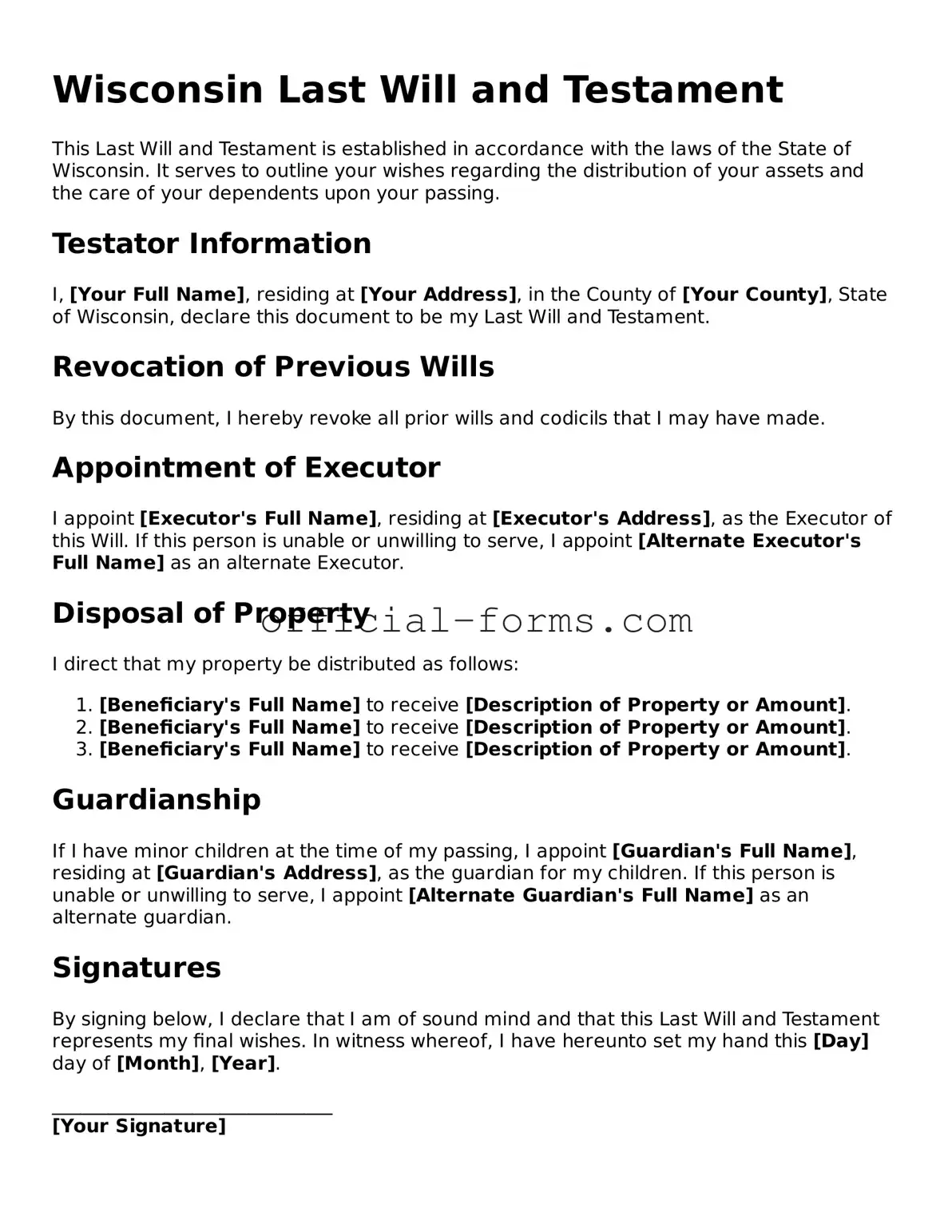Filling out a Last Will and Testament form in Wisconsin can be straightforward, but many people make common mistakes that can lead to complications later. One frequent error is not being clear about the distribution of assets. It’s crucial to specify who gets what. Vague language can create confusion and disputes among heirs.
Another mistake is failing to properly date the document. A will should always be dated to establish its validity. Without a date, it can be difficult to determine which version of the will is the most recent, leading to potential legal challenges.
Many individuals overlook the importance of having witnesses. Wisconsin law requires at least two witnesses to sign the will. If this step is neglected, the will may not be considered valid, and the intentions outlined could be disregarded.
Some people forget to update their will after major life events, such as marriage, divorce, or the birth of a child. Failing to reflect these changes can lead to unintended consequences. It’s essential to review and revise the will periodically to ensure it aligns with current wishes.
Another common pitfall is not including a clause for the appointment of an executor. This person will be responsible for ensuring that your wishes are carried out. Without a designated executor, the court may appoint someone, which might not align with your preferences.
Additionally, people sometimes neglect to consider tax implications related to their estate. Understanding how taxes will affect the distribution of assets can help in planning effectively. Consulting with a financial advisor can provide clarity on this matter.
Finally, many individuals fail to keep their will in a safe yet accessible location. It should be stored where trusted family members or the executor can easily find it after your passing. If the will is lost or inaccessible, your wishes may not be honored.
